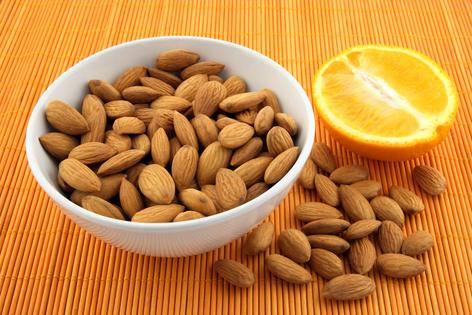Environmental Nutrition: Antioxidants: Antidote to disease
No doubt you've heard of antioxidants. They've been associated with everything from reduced cancer risk to slower aging. But what exactly are these powerful disease fighters, and how can you ensure you're getting enough?
Radical reactions
Atoms are constantly giving up and receiving electrons during chemical reactions in the body. If an atom gives up an electron and can't find one to take its place, it becomes a free radical, eager to scavenge electrons to fill the empty slot. If free radicals steal electrons from important cellular components, like DNA or cell membranes, the resulting damage can increase cancer risk, accelerate aging, and contribute to chronic diseases like cardiovascular disease and diabetes. Antioxidants offer spare electrons to satisfy and neutralize free radicals, thereby protecting cells from damage.
These disease-preventing health-boosters are found naturally in foods -- especially plant foods like fruits, vegetables, nuts, seeds and whole grains. Vitamins C and E, and the trace metal selenium are micronutrients that act as key antioxidants in the body. Many phytochemicals (bioactive plant compounds) also act as antioxidants or boost antioxidant activity, especially polyphenols (like flavonoids) and carotenoids (like beta-carotene). Supplements have not been shown to be effective, but antioxidant-rich diets are associated with lots of health benefits. Try the following tips to fill your body with an army of free-radical-neutralizing, disease-preventing, damage-reducing antioxidants.
Vary your veggies (and other plants)
Citrus, strawberries, bell peppers, carrots, sweet potatoes and dark leafy greens are some examples of produce rich in antioxidant vitamin C, vitamin E or beta-carotene -- but mix it up. Antioxidant phytochemicals give color to plants, so the more colors you eat, the more different types of antioxidants you're getting. Try pigmented grains such as black or red rice.
Go Nuts. Brazil nuts are rich in selenium, and nuts and seeds like almonds and sunflower seeds are great sources of vitamin E. Sprinkle them on salads or snack on a handful mixed with dried fruit.
Have fun with flavor
Herbs and spices such as ginger, rosemary and turmeric are packed with antioxidants. Even though we use them in small doses, they boost both flavor and free-radical-fighting potential.
Drink up
Black and green teas are rich in antioxidants, and coffee is too. Red wine contains the antioxidant resveratrol (but so do peanuts and berries), and cranberry, grape and cherry juices are antioxidant-rich choices as well. Matcha, a type of green tea made from powdered tea leaves, is a particularly rich source. If you don't like the taste, try adding a little to yogurts or smoothies.
Avoid free-radical-forming foods
Along with eating foods rich in antioxidants, cut back or eliminate foods that have been associated with the creation of free radicals, such as refined carbohydrates, sugars, processed meats (like sausage, bacon and salami), red meat, deep-fried foods and too much alcohol. It's also wise to avoid smoking.
(Environmental Nutrition is the award-winning independent newsletter written by nutrition experts dedicated to providing readers up-to-date, accurate information about health and nutrition in clear, concise English. For more information, visit www.environmentalnutrition.com.)







